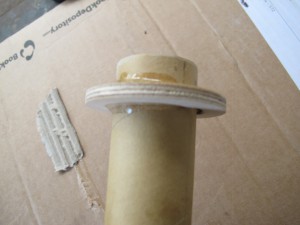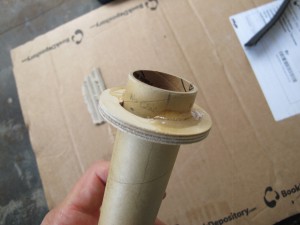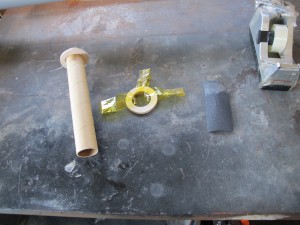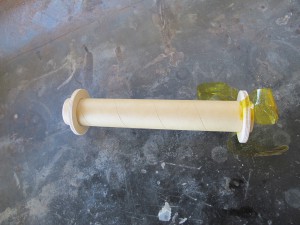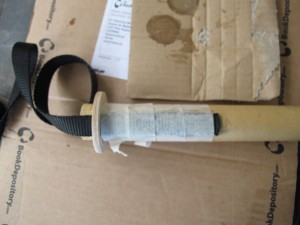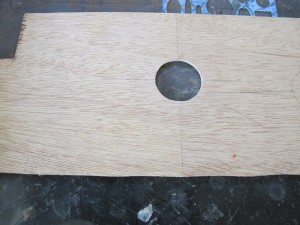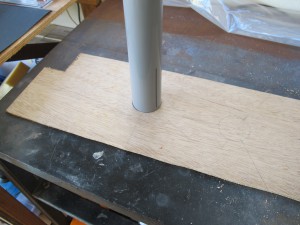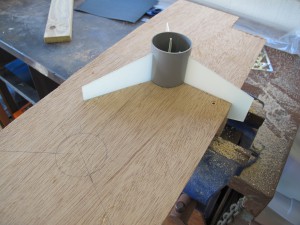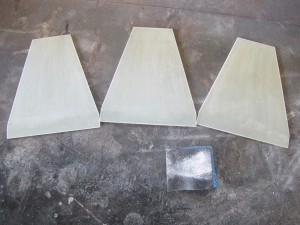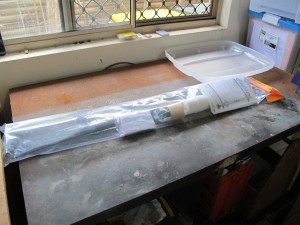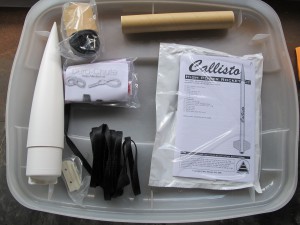To ensure a strong rocket, we need to add fillets to the fins where they meet the Quantum tub on the inside and where the fins meet the Motor Mount.
First we removed the Aft Ring (pulling on the cellophane tags). This reveals the inside as shown below.
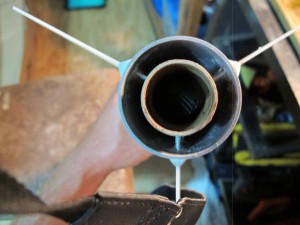
We then created a small batch of 5-minute Areldite and started to create a fillets. (3 x 4 = 12 fillets) in total. We used some doweling to get the Areldite all the way from the front end to the back. It was a messy job and it was hard to stop getting glue everywhere, but we tried hard. We made a special effort to stop any glue getting inside the motor mount and if any glue got on the outside of the motor mount (at the back end), we quickly wiped it off with a rag. We did this because we need to be able to insert the motor and we need to be able to put on the motor retainer.
Once this was complete, we then needed to put the AFT Motor Ring back into the quantum tubing with sufficient amount of Areldite to ensure it would not come out.
What can we learn from this?
While the external fillets created are strong and will definitely hold the fins in place, because there is no camber (concave surface), we have an abrupt change in surface direction and this will invite turbulent flow and so drag. This probably won’t be detrimental to the flight, but the maximum altitude won’t be attained. Something to be mindful of in L2 and other future rocket builds.

